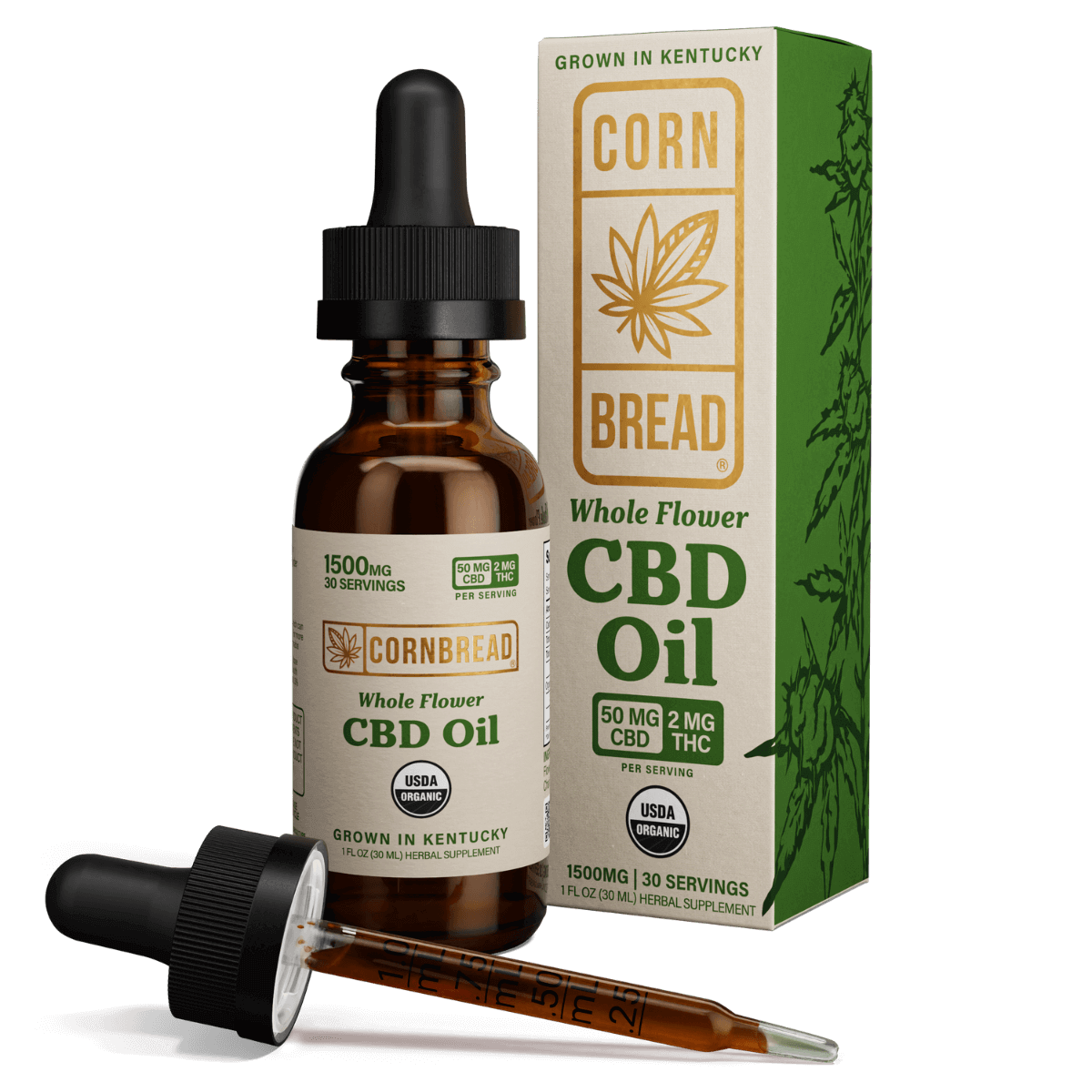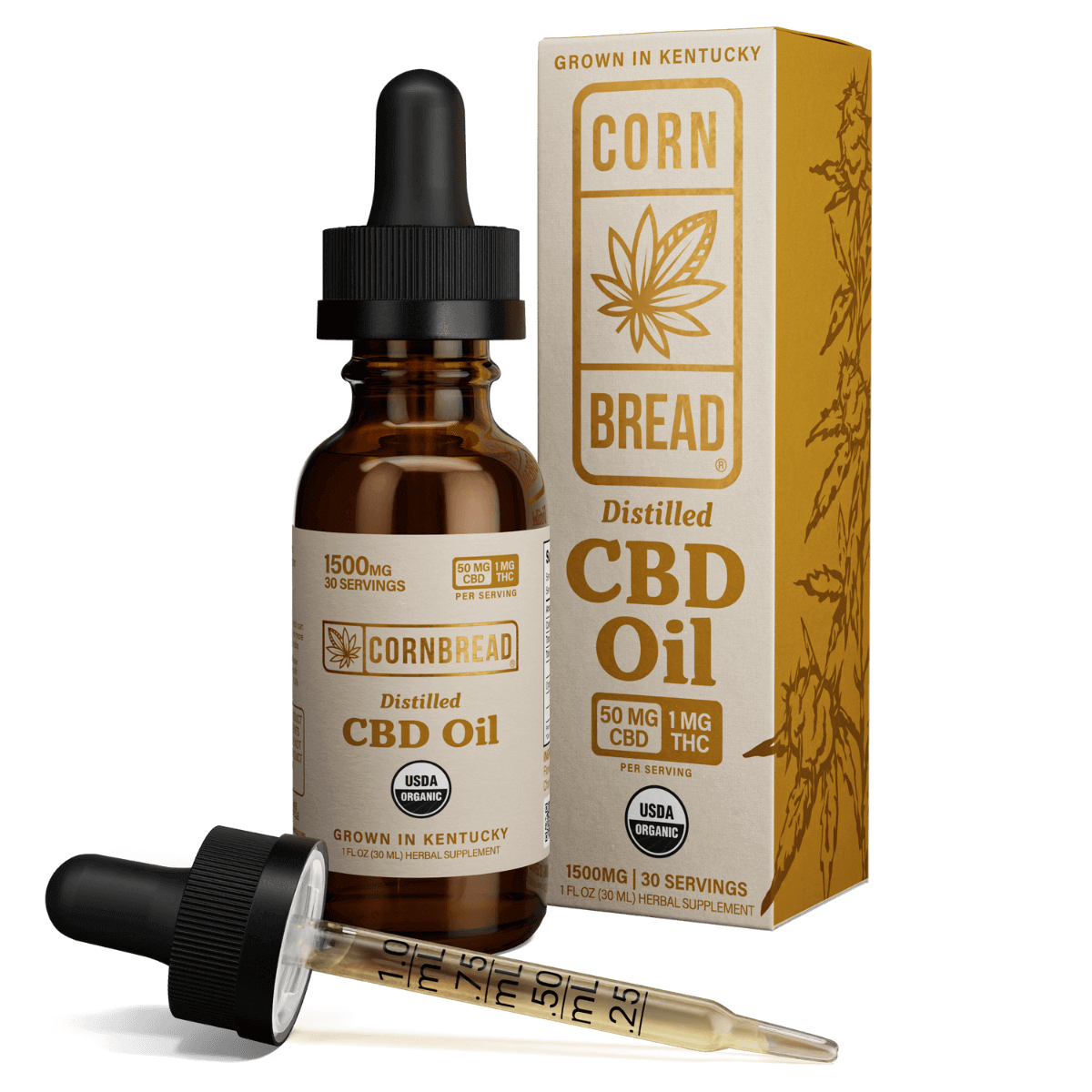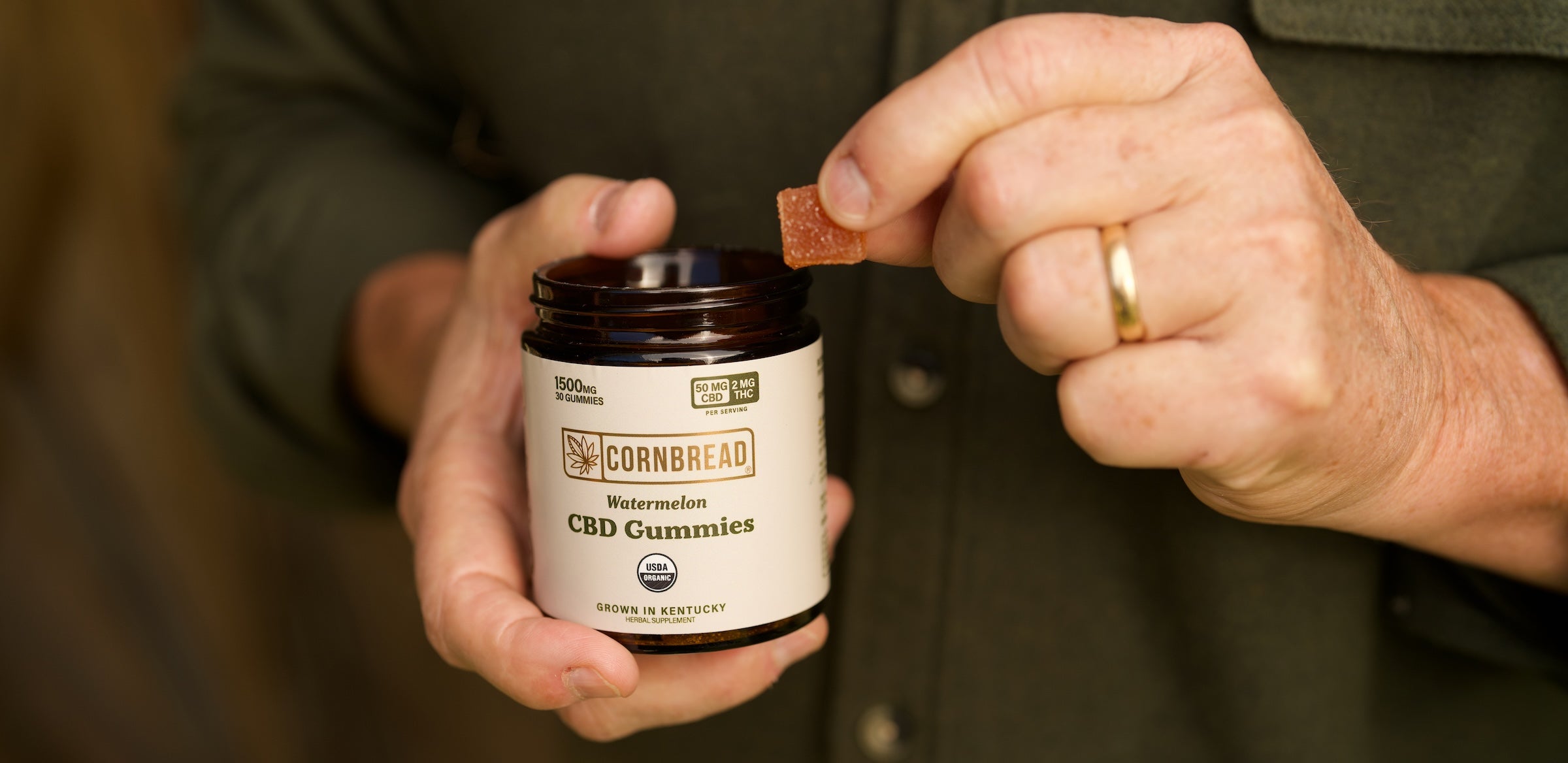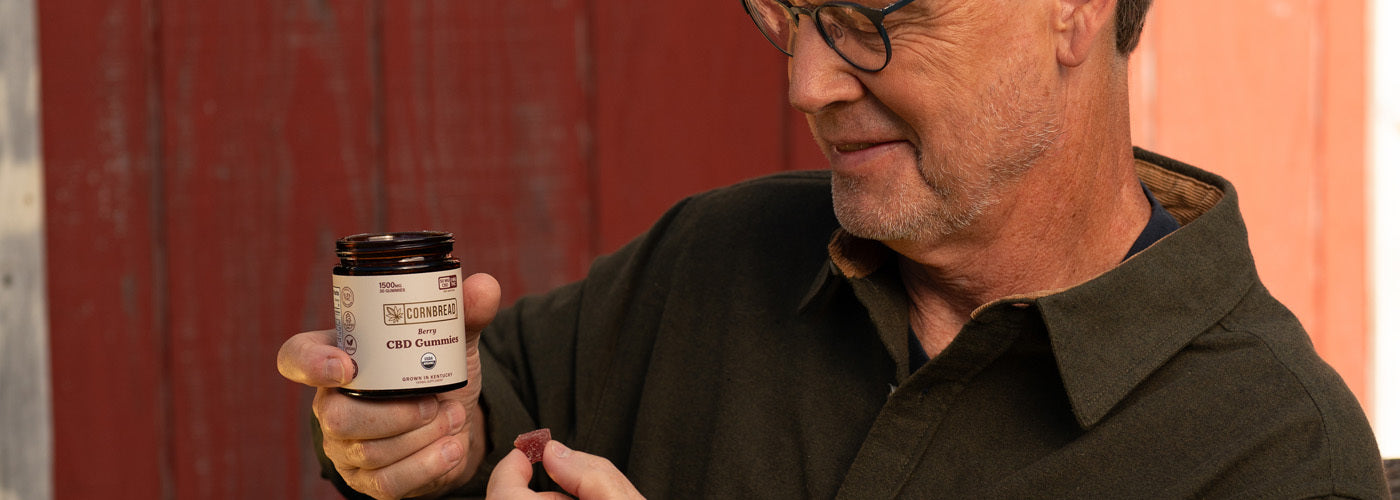Table of Contents
WHAT EVERYONE NEEDS TO KNOW ABOUT FLOWER-ONLY™ CBD
We started Cornbread Hemp because we knew we could do better than the low standards set by Corporate CBD. When we realized that these big companies were making their full spectrum CBD products with the "whole plant," we were shocked.
That's how Flower-Only™ full spectrum CBD was born.
WHAT IS FULL SPECTRUM CBD?
Full spectrum CBD refers to CBD products that contain all the cannabinoids found in the cannabis plant, including minor cannabinoids like Cannabichromene (CBC), Cannabigerol (CBG), Cannabinol (CBN), and also delta-9 THC up to the legal amount, which is currently not more than 0.3 percent by dry weight. Full spectrum CBD products also include other beneficial ingredients like terpenes and flavonoids.1
Full spectrum CBD appears to work by affecting a recently discovered system in the body called the endocannabinoid system, or ECS, according to preliminary research. The ECS consists of cannabinoid receptors found all over the body. Their job is to help these systems in the body achieve homeostasis, or balance, according to preliminary research.2
There are at least 100 cannabinoids found in the cannabis plant.3 Studies show that these compounds have the most effect on the ECS when they all work together. This process is called the “entourage effect.”4 This effect is less present when using broad spectrum products or not present at all in CBD isolate products. Only full spectrum CBD products triggers the entourage effect, according to available research.5
WHERE DOES CBD COME FROM?
To understand the difference between Flower-Only™ and "whole plant" CBD, let's first take a look at how full spectrum cannabinoids are produced.
All cannabis plants have a growth cycle of three to four months, which come in two stages: vegetative and flowering.6 In the vegetative stage, the plant is growing its stems and leaves, getting as tall and bushy as her genetics will allow. In the last month or so, as the daylight begins to decrease, the female plant enters the flowering stage.
When the flowering stage begins, the cannabis plant senses the end of the growing season and responds by producing higher amounts of resin in her flowers, in hopes of pollinating before it's too late.
That sticky resin produces cannabinoids, terpenes, and flavonoids in both hemp and marijuana plants.7 The stickier the flower, the more cannabinoids it contains!
WHAT IS WHOLE PLANT CBD?
Whole plant CBD simply means that the whole plant was used in the extraction process, instead of using just the flowers. Also known as “aerial parts," or anything that touches the air, whole plant CBD includes the stems, stalk, leaves, and seeds — along with cannabinoid-rich flowers.8
These plant parts are machine dried, shredded, and pelletized. The full spectrum cannabinoids are then obtained from these pellets, usually by an extraction process involving supercritical CO2. With so many added steps and processing, it's no wonder they need so much cover flavoring, like peppermint.
WHAT IS FLOWER-ONLY™ CBD?
What is Flower-Only™? It's exactly what it sounds like. We remove the hemp flowers from the hemp plant, before we extract it. That makes a better product for you, our customer.
The flower of the hemp plant has the highest concentration of cannabinoids of other parts of the plant, by a lot. When processed without the low-quality plant parts, the final product lends a delicate, floral flavor that will surprise anyone who hasn't yet tried it. That's why Cornbread Hemp has no need for cover flavor like peppermint. Sorry, peppermint fans.
To help you further understand the difference between Whole Plant and Flower-Only™ CBD oils, we made the infographic below for you!

THE DOWNSIDES OF FLOWER-ONLY™ CBD
Flower-Only CBD products are not cheap. Because we use only a fraction of the whole plant, the process of creating Flower-Only™ CBD products can get expensive.
To make Flower-Only™ CBD, the hemp plants are harvested and dried, and then the flowers are shucked from the plants by hand. Obviously, the volume of biomass that is being produced is significantly lower than the biomass produced by the whole plant process.
This process becomes even more expensive and time-consuming when conducted to the standards of the USDA organic program.
That's why USDA organic, full spectrum, Flower-Only™ CBD products are the pinnacle of CBD production today.







